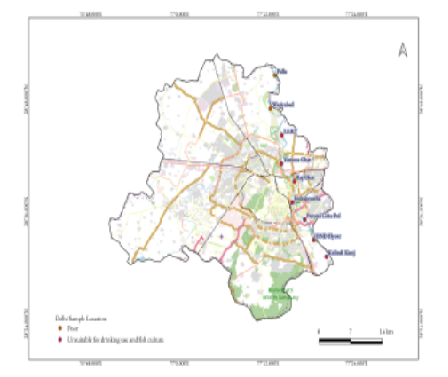


Indian Journal of Science and Technology
DOI: 10.17485/IJST/v16i44.2040
Year: 2023, Volume: 16, Issue: 44, Pages: 4090-4097
Original Article
Sunil Kumar1*, Rachna Bhateria1, Sunder Arya2
1Department of Environmental Science, Maharshi Dayanand University, Rohtak, 124001, Haryana, India
2Department of Botany, Maharshi Dayanand University, Rohtak, 124001, Haryana, India
*Corresponding Author
Email: [email protected]
Received Date:10 August 2023, Accepted Date:24 October 2023, Published Date:28 November 2023
Objective: The 22 Km Delhi stretch is a most polluted region of the Yamuna River. The current study was conducted to determine the physio-chemical and biological parameters of Yamuna River water along with heavy metals in water, sediment, and aquatic plants in Delhi. Methods: The water physio-chemical and heavy metals in sediments as well as aquatic plants were determined by standard procedures. Findings: The values of total dissolved solids (TDS), turbidity, phosphate (PO4), dissolved oxygen (DO), biological oxygen demand (BOD), chemical oxygen demand (COD), iron (Fe), zinc (Zn), copper (Cu), chromium (Cr), Nickel (Ni) and lead (Pb) in water samples varied from 544 to 1134 mg L-1, 8 to 53 NTU, 0.11 to 1,46, 2.6 to 8.4, 3.2 to 28.4, 30 to 280, 0,36 to 1.45, 0.16 to 0.41, 0.02 to 0.14, BDL to 0.06, 0.03 to 0.09 and 0.02 to 0.08 mg L-1, respectively. The results confirmed that TDS, turbidity, PO4, Fe, Zn, Ni and Pb values surpassed the acceptable limit of BIS (2012) in all the water samples. The seven downstream sites showed a higher BOD5 level than prescribed by WHO (5mg/l). The Water Quality Index (WQI) ranged from 74 to 278, indicating that the water quality of downstream sites, after Wazirabad, was not found suitable for drinking purposes and fish culture. The enrichment factor (EF) for Zn (1.18-13.7), Cu (1.53-10.9, Ni (2.84-9.02), and Pb (1.36-8.99) was found to be quite high in the sediments. The aquatic plant Ranunculus sceleratus had high accumulations of Ni (246 mg kg-1), Pb (276 mg kg-1), and Zn (154 mg kg-1) metals, whereas Cu (236 mg kg-1) and Cr (40 mg kg-1) were found to be maximum in Eicchornia crassipes. All the samples of plants surpassed the threshold level of Cr, Ni and Pb. Novelty : The outcome of this study shows that the Yamuna River is badly polluted in the Delhi region. It is pertinent to create a robust wastewater treatment facility for the entire Delhi region before discharging into the Yamuna River.
Keywords: Heavy Metals, River Yamuna, Sediment, Aquatic Vegetation, Enrichment Factor
© 2023 Kumar et al. This is an open-access article distributed under the terms of the Creative Commons Attribution License, which permits unrestricted use, distribution, and reproduction in any medium, provided the original author and source are credited. Published By Indian Society for Education and Environment (iSee)
Subscribe now for latest articles and news.